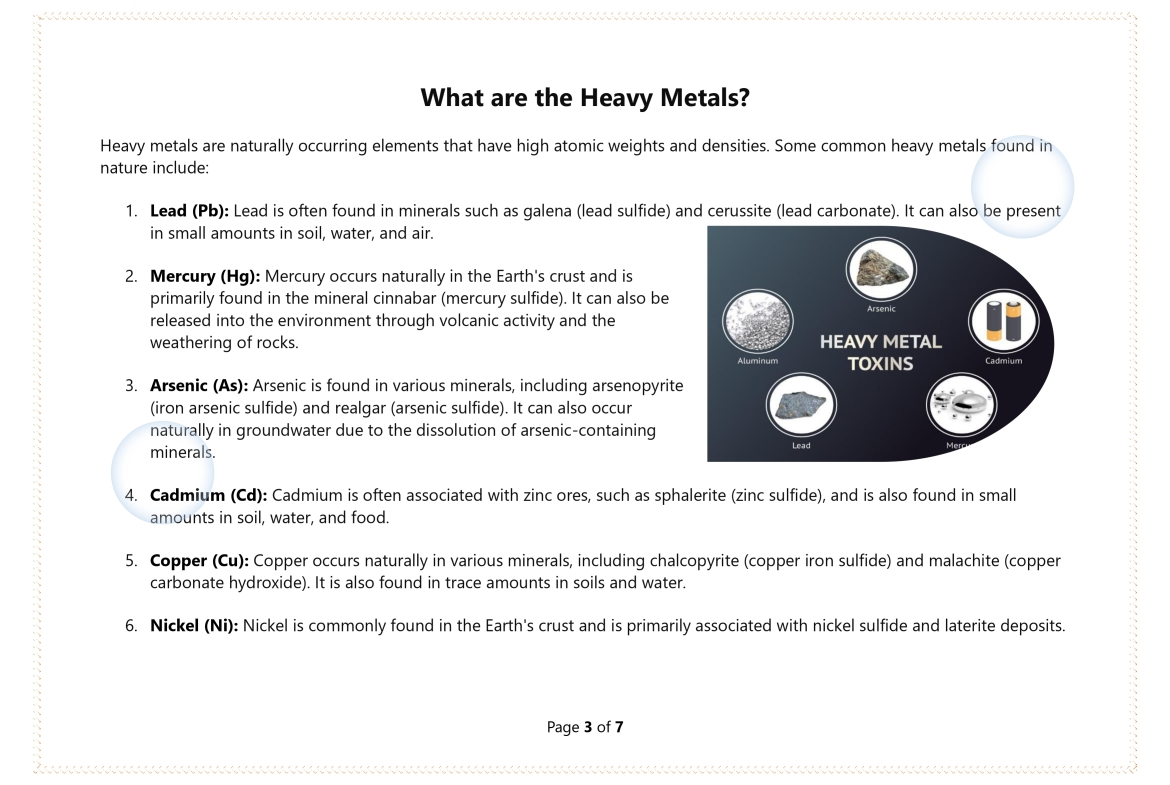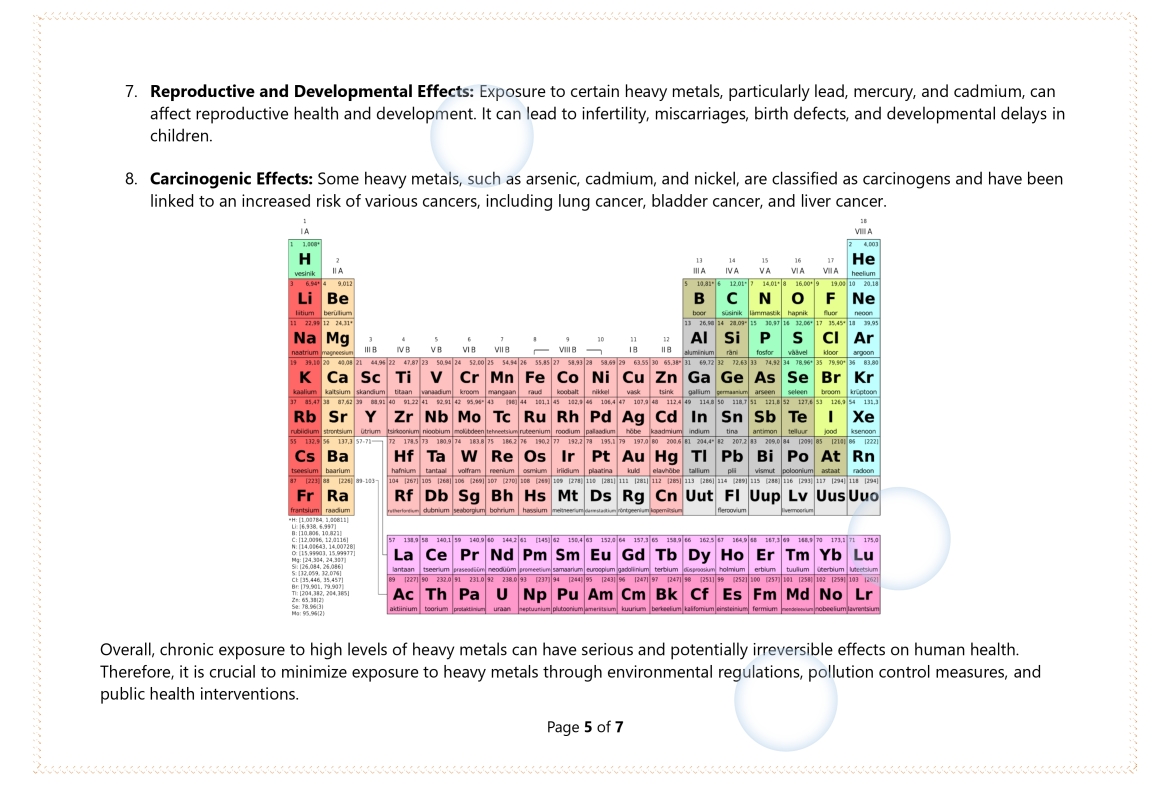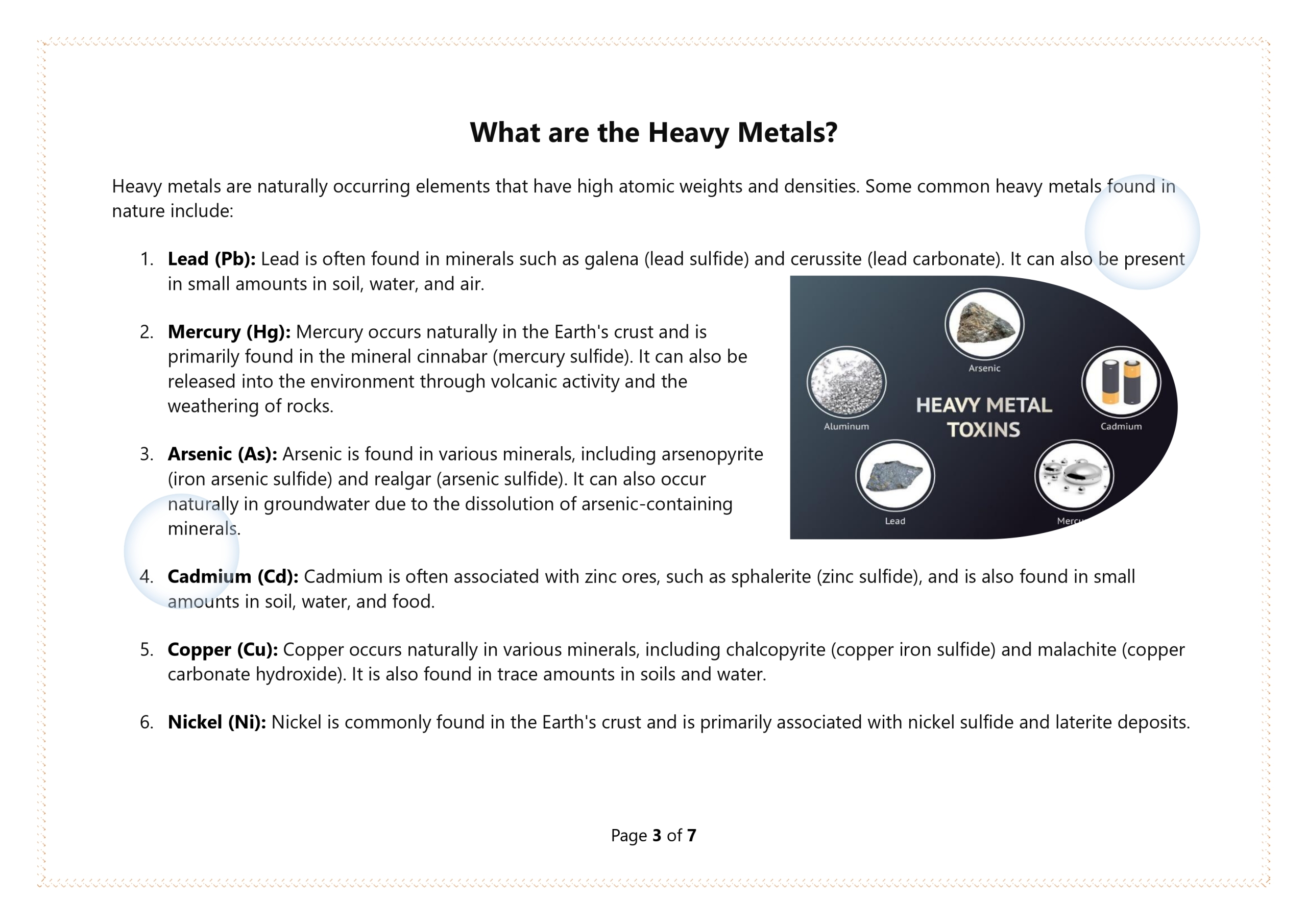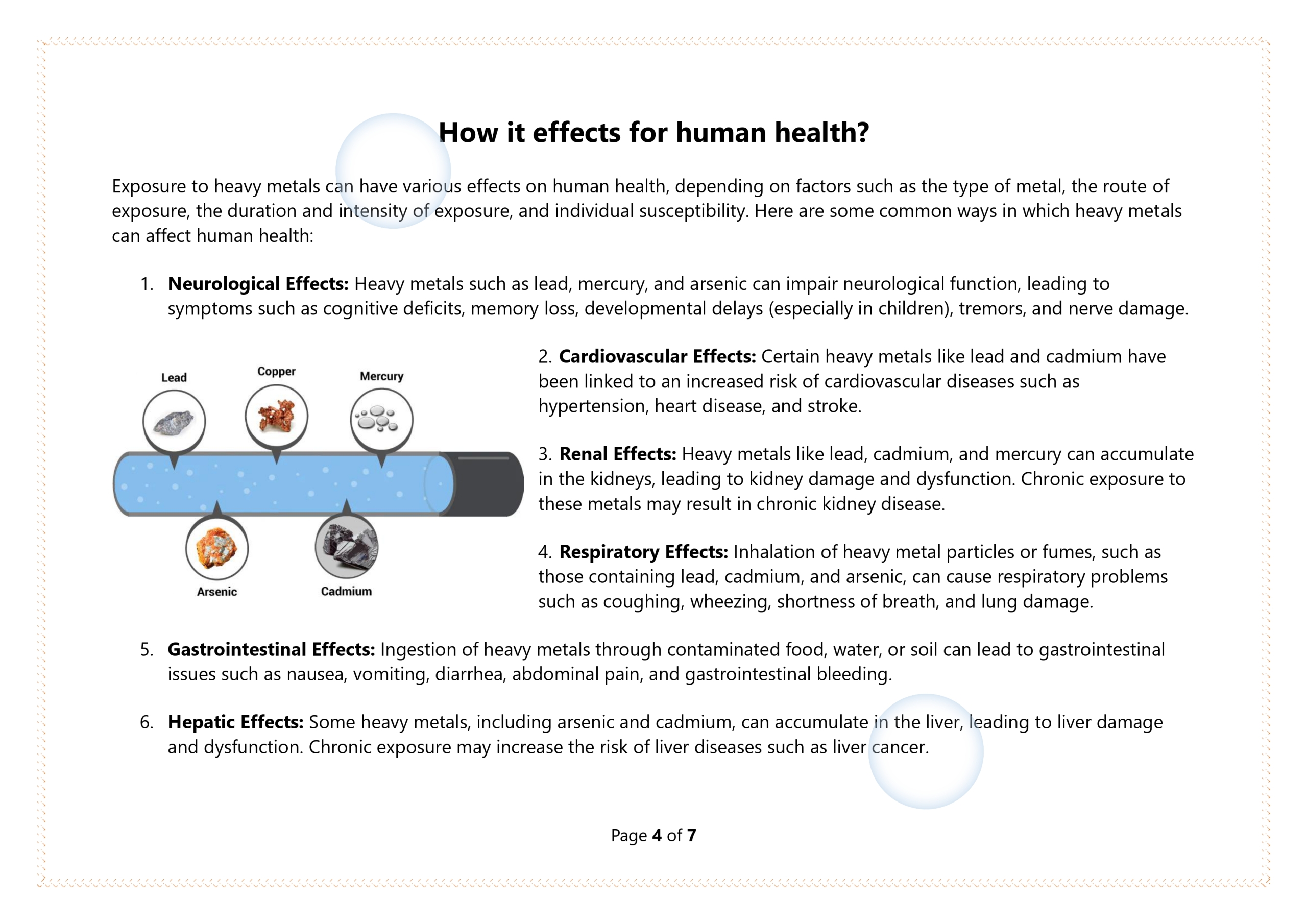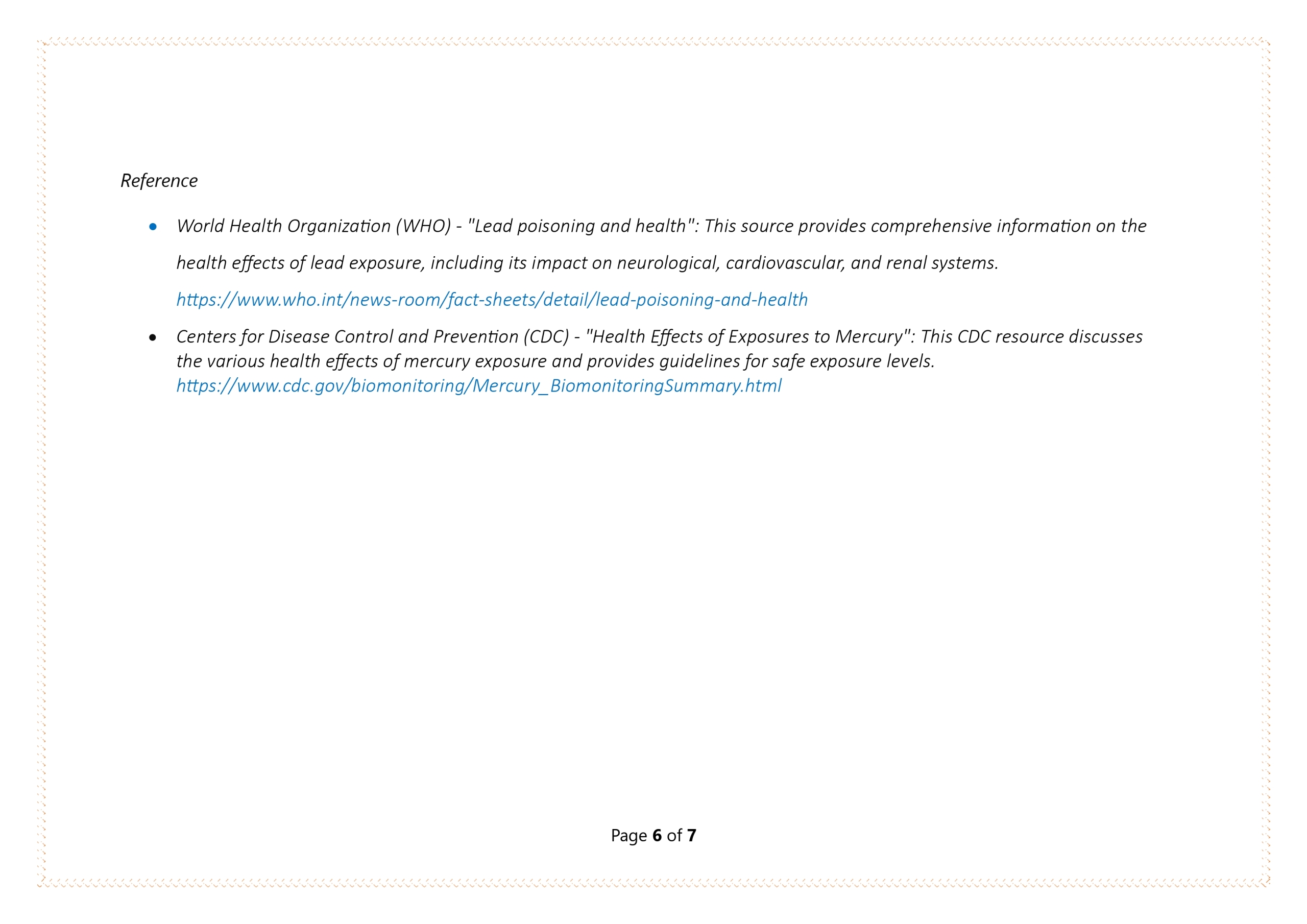Description
What are the Heavy metals?
Heavy metals are naturally occurring elements that have high atomic weights and densities. Some common heavy metals found in nature include:
- Lead (Pb): Lead is often found in minerals such as galena (lead sulfide) and cerussite (lead carbonate). It can also be present in small amounts in soil, water, and air.
- Mercury (Hg): Mercury occurs naturally in the Earth’s crust and is primarily found in the mineral cinnabar (mercury sulfide). It can also be released into the environment through volcanic activity and the weathering of rocks.
- Arsenic (As): Arsenic is found in various minerals, including arsenopyrite (iron arsenic sulfide) and realgar (arsenic sulfide). It can also occur naturally in groundwater due to the dissolution of arsenic-containing minerals.
- Cadmium (Cd): Cadmium is often associated with zinc ores, such as sphalerite (zinc sulfide), and is also found in small amounts in soil, water, and food.
- Copper (Cu): Copper occurs naturally in various minerals, including chalcopyrite (copper iron sulfide) and malachite (copper carbonate hydroxide). It is also found in trace amounts in soils and water.
- Nickel (Ni): Nickel is commonly found in the Earth’s crust and is primarily associated with nickel sulfide and laterite deposits.
How it effects for human health?
Exposure to heavy metals can have various effects on human health, depending on factors such as the type of metal, the route of exposure, the duration and intensity of exposure, and individual susceptibility. Here are some common ways in which heavy metals can affect human health:
-
- Neurological Effects: Heavy metals such as lead, mercury, and arsenic can impair neurological function, leading to symptoms such as cognitive deficits, memory loss, developmental delays (especially in children), tremors, and nerve damage.
- Cardiovascular Effects: Certain heavy metals like lead and cadmium have been linked to an increased risk of cardiovascular diseases such as hypertension, heart disease, and stroke.
- Renal Effects: Heavy metals like lead, cadmium, and mercury can accumulate in the kidneys, leading to kidney damage and dysfunction. Chronic exposure to these metals may result in chronic kidney disease.
- Respiratory Effects: Inhalation of heavy metal particles or fumes, such as those containing lead, cadmium, and arsenic, can cause respiratory problems such as coughing, wheezing, shortness of breath, and lung damage.
- Gastrointestinal Effects: Ingestion of heavy metals through contaminated food, water, or soil can lead to gastrointestinal issues such as nausea, vomiting, diarrhea, abdominal pain, and gastrointestinal bleeding.
- Hepatic Effects: Some heavy metals, including arsenic and cadmium, can accumulate in the liver, leading to liver damage and dysfunction. Chronic exposure may increase the risk of liver diseases such as liver cancer.
- Reproductive and Developmental Effects: Exposure to certain heavy metals, particularly lead, mercury, and cadmium, can affect reproductive health and development. It can lead to infertility, miscarriages, birth defects, and developmental delays in children.
- Carcinogenic Effects: Some heavy metals, such as arsenic, cadmium, and nickel, are classified as carcinogens and have been linked to an increased risk of various cancers, including lung cancer, bladder cancer, and liver cancer.
Overall, chronic exposure to high levels of heavy metals can have serious and potentially irreversible effects on human health. Therefore, it is crucial to minimize exposure to heavy metals through environmental regulations, pollution control measures, and public health interventions.



